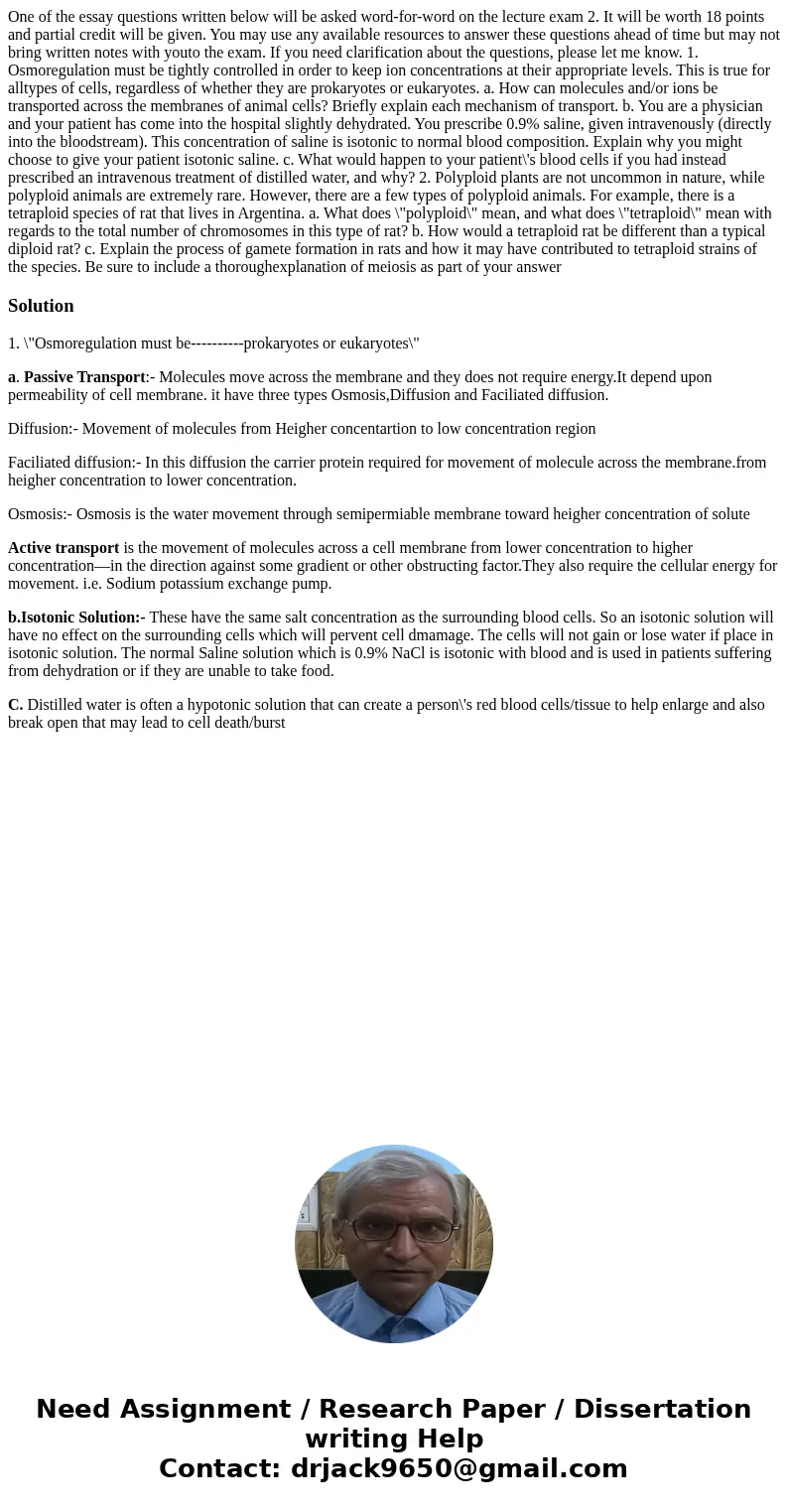One of the essay questions written below will be asked word-for-word on the lecture exam 2. It will be worth 18 points and partial credit will be given. You may use any available resources to answer these questions ahead of time but may not bring written notes with youto the exam. If you need clarification about the questions, please let me know. 1. Osmoregulation must be tightly controlled in order to keep ion concentrations at their appropriate levels. This is true for alltypes of cells, regardless of whether they are prokaryotes or eukaryotes. a. How can molecules and/or ions be transported across the membranes of animal cells? Briefly explain each mechanism of transport. b. You are a physician and your patient has come into the hospital slightly dehydrated. You prescribe 0.9% saline, given intravenously (directly into the bloodstream). This concentration of saline is isotonic to normal blood composition. Explain why you might choose to give your patient isotonic saline. c. What would happen to your patient\'s blood cells if you had instead prescribed an intravenous treatment of distilled water, and why? 2. Polyploid plants are not uncommon in nature, while polyploid animals are extremely rare. However, there are a few types of polyploid animals. For example, there is a tetraploid species of rat that lives in Argentina. a. What does \"polyploid\" mean, and what does \"tetraploid\" mean with regards to the total number of chromosomes in this type of rat? b. How would a tetraploid rat be different than a typical diploid rat? c. Explain the process of gamete formation in rats and how it may have contributed to tetraploid strains of the species. Be sure to include a thoroughexplanation of meiosis as part of your answer
1. \"Osmoregulation must be----------prokaryotes or eukaryotes\"
a. Passive Transport:- Molecules move across the membrane and they does not require energy.It depend upon permeability of cell membrane. it have three types Osmosis,Diffusion and Faciliated diffusion.
Diffusion:- Movement of molecules from Heigher concentartion to low concentration region
Faciliated diffusion:- In this diffusion the carrier protein required for movement of molecule across the membrane.from heigher concentration to lower concentration.
Osmosis:- Osmosis is the water movement through semipermiable membrane toward heigher concentration of solute
Active transport is the movement of molecules across a cell membrane from lower concentration to higher concentration—in the direction against some gradient or other obstructing factor.They also require the cellular energy for movement. i.e. Sodium potassium exchange pump.
b.Isotonic Solution:- These have the same salt concentration as the surrounding blood cells. So an isotonic solution will have no effect on the surrounding cells which will pervent cell dmamage. The cells will not gain or lose water if place in isotonic solution. The normal Saline solution which is 0.9% NaCl is isotonic with blood and is used in patients suffering from dehydration or if they are unable to take food.
C. Distilled water is often a hypotonic solution that can create a person\'s red blood cells/tissue to help enlarge and also break open that may lead to cell death/burst

 Homework Sourse
Homework Sourse